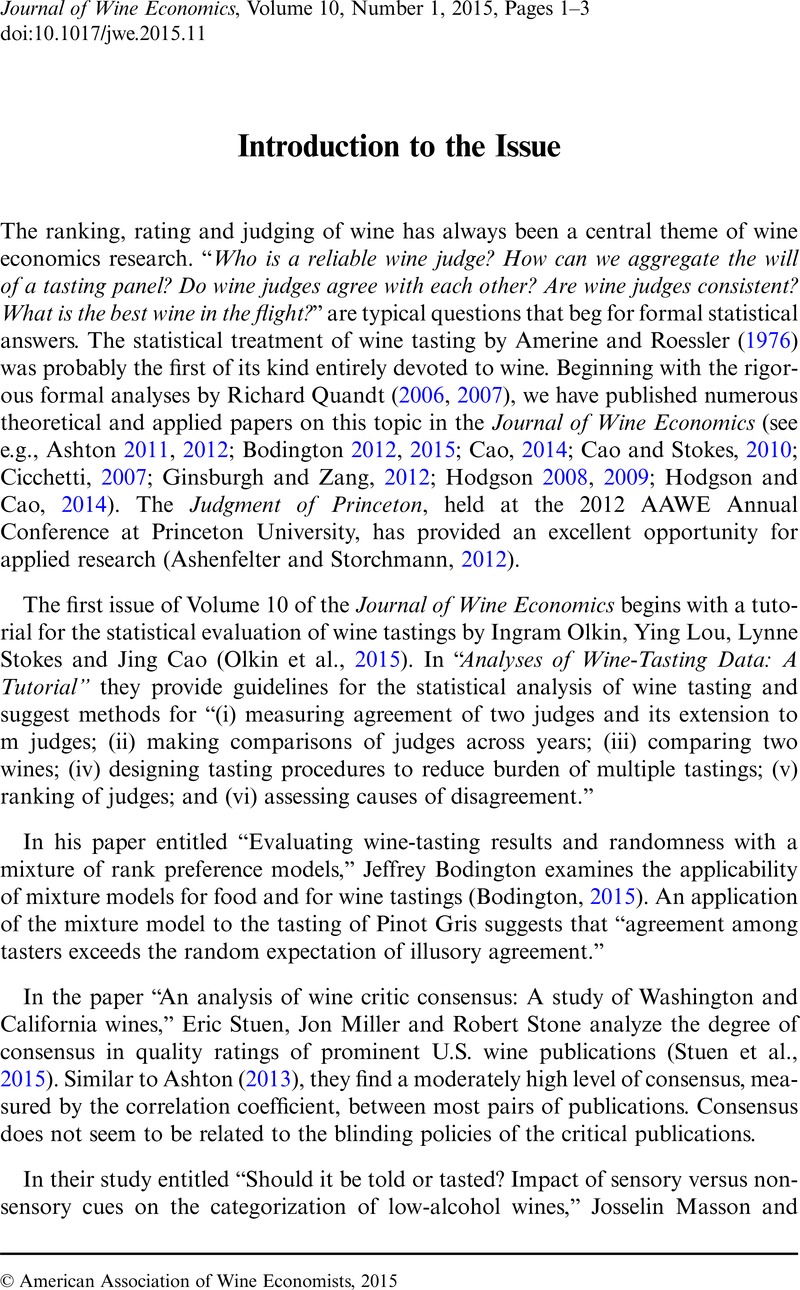Crossref Citations
This article has been cited by the following publications. This list is generated based on data provided by Crossref.
Chen, Bernard
Le, Hai
Rhodes, Christopher
and
Che, Dongsheng
2016.
Advances in Data Mining. Applications and Theoretical Aspects.
Vol. 9728,
Issue. ,
p.
239.
Chen, Bernard
Velchev, Valentin
Palmer, James
and
Atkison, Travis
2018.
Wineinformatics: A Quantitative Analysis of Wine Reviewers.
Fermentation,
Vol. 4,
Issue. 4,
p.
82.
Chen, Bernard
2023.
Wineinformatics.
p.
29.



